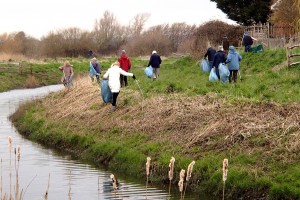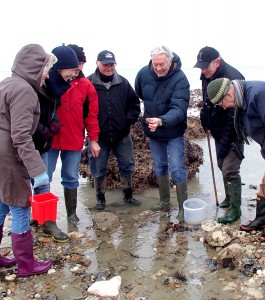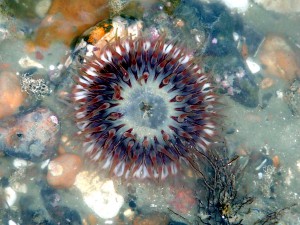Dr Margaret Pilkington, Emeritus, University of Sussex and author, opened our March Group meeting with an illustrated talk on Wildflower Meadows. She began by taking us all back to by-gone days when meadows were plentiful but sadly the majority have been lost in recent decades with changes in agricultural practices and the spread of built development.
By using the most common type of meadow Dr Pilkington explained how, with the help of the National Vegetation Classification (NVC), we can understand the unique collection of plants present and how we can help to ensure the survival of this special and vulnerable habitat with the Biodiversity Action Plan. The NVC is the culmination of a 15-year project to identify all the different types of vegetation in Britain. For example the most common meadow plant is the Common Knapweed Community, known as MG5 and also includes Ribwort Plantain, Cocksfoot, Red and White Clover and Bird’s Foot Trefoil.
Managing a meadow appropriately will, over time, help to increase the range and number of flowers that it supports, whereby increasing the quantity and quality of foraging habitat for bees. This will include cutting the meadow in late summer and removing the clippings and avoiding the application of chemical fertilizers. All is not lost if farmers can be given incentives to move away from intensive farming practices and allow hay meadows to play their vital role in effective land management.
After tea Tricia Hall gave us many examples of the welcome signs of spring during her Nature Notes presentation. Coltsfoot had been spotted growing beside the lagoons by the River Rife, also Celandines and Wild Cherry were evident in and around the village as well as Tortoiseshell and Peacock butterflies. Several birds of prey were seen circling overhead plus a Reed Bunting by the Rife and a Common Seal was witnessed a little out to sea off the Goring Gap together with Brent Geese flying just above the shoreline in the same area. A medieval herb bed has been established on the Village Green to commemorate 1250 years of a settlement in Ferring which includes herbs that were used for culinary, medicinal, dyeing and strewing purposes.
Ed Miller followed with an update on planning issues and advised us there were 2 new similar applications from the Peugeot Garage in respect of their previous refused submissions.
Our chairman David Bettiss concluded the meeting by thanking all of the participants that helped in the recent River Rife ‘Clear Up’ and the construction of the village green ‘Medieval Herb Garden’.



